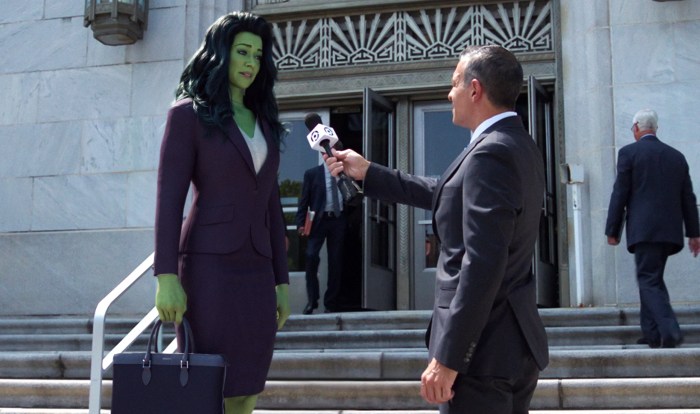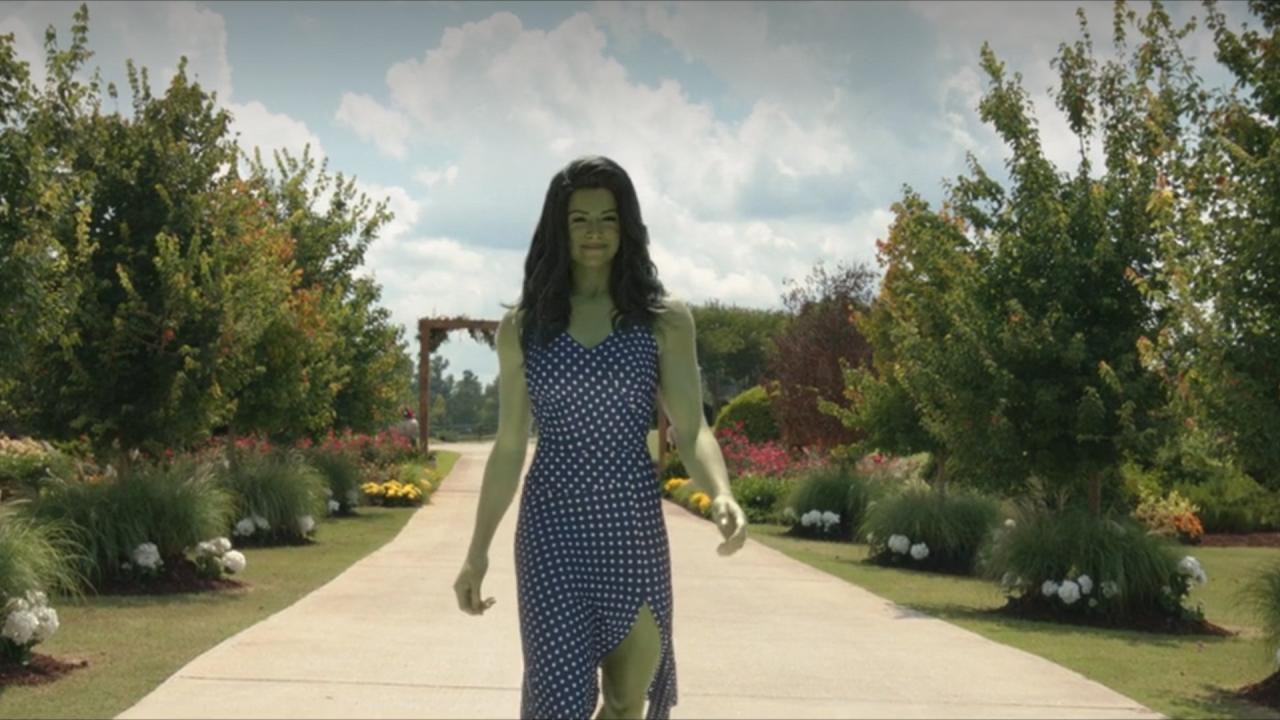Tatiana Maslany’s portrayal of Jennifer Walters in “She-Hulk: Attorney at Law” has sparked significant discussion among Marvel Cinematic Universe (MCU) fans and critics alike. Her performance transcends the typical superhero archetype, blending sharp comedic timing with genuine emotional depth. This exploration delves into Maslany’s unique acting style, the character’s development, the show’s reception, and its broader impact on the MCU and the representation of female superheroes.
We will analyze Maslany’s performance against other MCU leading ladies, examine the evolution of Jennifer Walters’ character arc, and assess the show’s critical and audience reception. Furthermore, we’ll delve into the visual presentation of the show, including costume design and its contribution to the overall narrative. The goal is to provide a comprehensive overview of Maslany’s contribution to the success of “She-Hulk: Attorney at Law.”
The Show’s Reception and Impact

She-Hulk: Attorney at Law received a mixed reception, highlighting the complexities of audience engagement with a meta-narrative and a female-led superhero series within the established Marvel Cinematic Universe. Critical reviews varied significantly, while audience reactions were equally diverse, creating a fascinating case study in how genre expectations and character representation influence viewer response.
Critical reviews were divided, with some praising the show’s humor, self-awareness, and unique approach to superhero storytelling, while others criticized its tone, pacing, and perceived inconsistencies with the broader MCU. Audience response was similarly fragmented, with strong opinions expressed on both sides of the spectrum. Social media discussions reflected these divisions, showcasing passionate debates about the show’s merits and shortcomings. This disparity underlines the subjective nature of artistic appreciation and the impact of individual viewer expectations.
Critical and Audience Reception Compared
The contrast between critical and audience reception reveals interesting patterns. While some critics appreciated the show’s meta-commentary and its breaking of the fourth wall, others found this approach jarring or distracting. Audience reactions often mirrored these sentiments, with some viewers embracing the humor and self-awareness, while others felt it undermined the seriousness of the superhero genre. Aggregate review scores on sites like Rotten Tomatoes offer a quantifiable, albeit incomplete, picture of this divergence, highlighting the lack of universal consensus on the show’s quality. For example, while the critic score may reflect a generally positive response, user reviews might showcase a more polarized reaction, revealing a gap between professional critics’ assessments and general audience perception.
The Show’s Impact on Audience Perceptions of Female Superheroes
She-Hulk’s portrayal of a female superhero significantly impacted audience perceptions, challenging established tropes and stereotypes within the genre. Jennifer Walters’ portrayal as a confident, intelligent, and flawed individual, balancing her superhero life with her legal career, resonated with many viewers. Her struggles with body image and self-doubt, while presented humorously, were also relatable, creating a more nuanced and realistic depiction than often seen in traditional superhero narratives. This departure from the archetype of the stoic, invincible hero challenged conventional notions of female empowerment and broadened the spectrum of relatable female characters in superhero media. The positive response from many viewers demonstrated a hunger for more complex and realistic female superhero representations.
She-Hulk’s Contribution to the MCU Narrative
She-Hulk: Attorney at Law, while a standalone series, subtly contributed to the broader MCU narrative by introducing new characters and storylines that could potentially intersect with future projects. The show’s inclusion of established MCU characters, such as Daredevil and Wong, provided a sense of continuity and expanded their character arcs. Furthermore, the legal cases Jennifer Walters handled, often involving other superhuman individuals, hinted at broader issues and conflicts within the MCU, leaving the door open for future narrative developments. The show’s lighthearted tone, however, contrasted with the often darker and more serious tone of other MCU productions, creating a unique space within the franchise’s overall narrative landscape.
Representation of Female Characters
The show’s representation of female characters went beyond Jennifer Walters. Supporting characters like Nikki Ramos and Mallory Book provided diverse and well-developed personalities, avoiding the pitfalls of stereotypical female portrayals often found in superhero media. These characters displayed strong professional skills and personal ambitions, further enriching the show’s portrayal of women in a professional setting and in superhero-related situations. The inclusion of diverse female characters with unique backgrounds and motivations contributed to a more inclusive and representative portrayal of women within the MCU.
Hypothetical Marketing Campaign Highlighting the Actress’s Performance
A hypothetical marketing campaign could focus on Tatiana Maslany’s versatility and comedic timing. The campaign could utilize short, engaging video clips showcasing her range, from subtle comedic expressions to action-packed fight sequences. Social media engagement would be crucial, using hashtags like #SheHulk, #TatianaMaslany, and #Marvel. The campaign could also leverage user-generated content, encouraging fans to share their favorite moments and create their own comedic skits inspired by the show. This approach, emphasizing both the actress’s talent and the show’s unique humor, would appeal to a broad audience and potentially attract new viewers. Furthermore, partnerships with fashion brands could be explored, leveraging Maslany’s style and the show’s fashion-forward elements.
End of Discussion

Ultimately, Tatiana Maslany’s performance as Jennifer Walters in “She-Hulk: Attorney at Law” is a testament to her versatility and comedic prowess. Her nuanced portrayal of a complex female character navigating both professional and superheroic challenges has resonated with audiences and critics, solidifying her place within the MCU and pushing boundaries for female representation in superhero media. The show’s success, in no small part due to her performance, marks a significant step forward in the evolution of the MCU and superhero narratives more broadly.
FAQ Summary
What are some of the biggest challenges Tatiana Maslany faced playing She-Hulk?
Balancing the dual personality of Jennifer Walters and She-Hulk, maintaining comedic timing while delivering emotionally resonant scenes, and potentially dealing with the pressure of joining an established franchise like the MCU.
How did the She-Hulk costume evolve throughout the series?
The costume likely underwent minor adjustments throughout the series, perhaps reflecting Jennifer’s growing comfort and confidence as She-Hulk. Specific details would require a visual analysis of each episode.
How does She-Hulk’s portrayal differ from other female superheroes in the MCU?
She-Hulk’s portrayal stands out due to its emphasis on humor and its focus on a more relatable, flawed, and comedically-driven female character compared to some of the more traditionally serious MCU heroines.